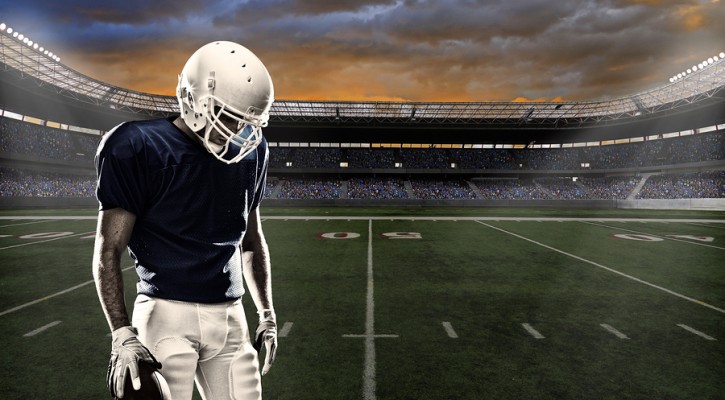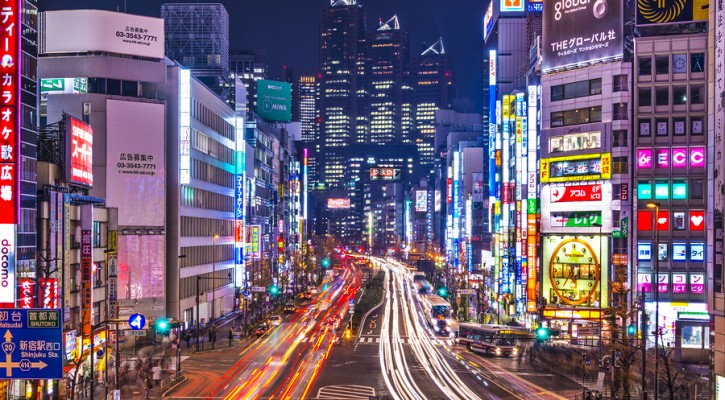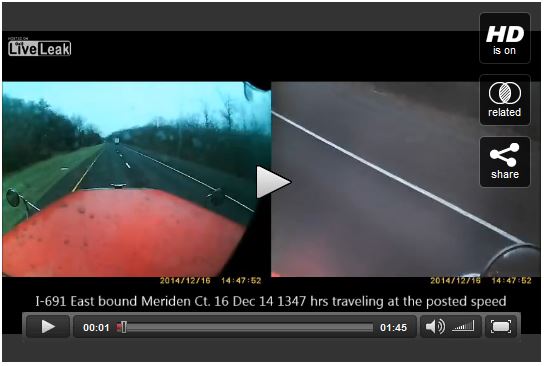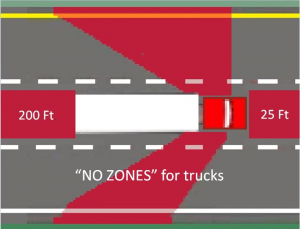Category Archive: Safe Driving

If The Home Team Loses, You May Lose Too
January 30, 2015
When the home team loses, auto collision rates increase around NFL stadiums. This finding is the result of a study by the Highway Loss Data Institute. The Institute looked at insurance collision claims in zip codes for 31 NFL stadiums and zip codes nearby.
The researchers found that claims went up on days when home games were played. This may make sense due to the large amount of traffic around an NFL stadium on game days but reasons behind these crash claims go deeper than that.
Not only did claims go up on game days, there were big differences based on whether the home team won or lost. When the home team won, the crash rate increased by 3.2 percent compared to days when the team was out of town. When the home team lost, the crash rate was 9.4 percent higher.
What would explain the higher crash rate when the home team loses? Driving safety experts have long known that driver emotions are the driving force behind car crashes. No matter the emotion, any emotion, whether good or bad, that can take your mind off the road can lead to a crash.
Drivers, who may be elated by a win and in a celebratory mood, may not be devoting their full concentration to the road ahead. Drivers who are upset or angry by the loss may also be giving less attention than needed to the road ahead but their anger can also make them impatient with other drivers. Their anger and frustration may also lead them to take chances they might not otherwise take.
With the Super Bowl approaching, no matter where they live, fans all over the nation will be attending Super Bowl parties, either at private homes or sports bars. Even though the teams involved may not be the home team, ardent football fans will root for one team or another and passions will be high. Alcohol, which is a depressant, may be involved, adding to the anger and frustration for fans of the losing team.
Drivers need to be aware of these emotions and the effect they may have on their driving. If you bet on a team and lose, your anger will most likely be even greater. Spouses or partners of rabid football fans may want to take over the driving duties after the game regardless of who wins or loses.
If alcohol is involved in your Super Bowl plans, make sure you have a plan for getting home either with a designated driver or by calling a cab.
One team has to lose and that means, unless fans can put the game behind them and concentrate on the road, other drivers who aren’t invested in the game will be in danger too.
Read more: Home team loss boosts collision claim rates around NFL stadiums

Can Courtesy Keep You Safe On The Road?
January 28, 2015
Courtesy is a hallmark of Japanese culture. It’s hard to think of Japan without the vision of hyper-polite citizens bowing to each other. One theory of Japanese etiquette is that it developed long ago to deal with the problems of a very large population living and working in a very small country. Along with courtesy, there’s also a strict adherence to society’s rules. This led me to wonder if Japanese courtesy and adherence to the rules extended to the roadways and how Japanese drivers compare with those in the US.
Japan is a tiny country. Japan’s 145,925 square miles – slightly smaller than Montana – make up less than four percent of the total land area in the US. In order to compare the two countries, we have to look at population density. The US with its wide open spaces has a population density of only 88.6 people per square mile. Japan’s population density, by contrast, is 873.1 people per square mile. That makes for very crowded conditions.
Out of all the nations in the world, the US has the greatest number of registered vehicles on the road. That may not come as a great surprise but the country with the second greatest number of registered vehicles is Japan. The US has 846.2 registered vehicles per 1,000 people followed by Japan with 650.9 vehicles per 1,000 people. Not only is Japan a crowded country, their roads are crowded too.
With that many vehicles in such a small space, you might think that Japan would have a high roadway death rate but that isn’t the case. When comparing the highway fatality rate of the two nations, the figures look like this:
|
Country |
Fatalities per 100,000 inhabitants |
Fatalities per 10,000 vehicles |
|
Japan |
4.1 |
0.6 |
|
US |
11.6 |
1.3 |
According to The International Transportation Forum, in 2012, the total highway fatality rate in each country was:
|
Country |
Total fatalities |
Percent change from 2011 |
|
Japan |
5,237* |
-4.9 |
|
US |
33,561 |
+3.3% |
*Out of all the highway deaths in Japan, 36% were pedestrians.
When you think of the US, you tend to think of a fast paced life style but Japan’s society is every bit as fast paced, if not more so.
When comparing speeding between the two countries:
- In the US in 2012 speeding was responsible for 30% of all fatalities with 10,219 lives lost in speed related crashes; an increase of two percent over 2011.
- In Japan, between 2002 and 2012, the number of crashes outside the motorway network involving speeds above 100 km/h (62 mph) decreased by 82%.
Could it be that the Japanese sense of courtesy and adherence to societal rules is responsible for the large difference in highway death rates? If Americans were just as courteous and law abiding on the roads, could we drastically reduce our highway death rates? There’s only one way to find out.

Ants Can Do It, Why Can’t We?
January 20, 2015
Ants, even when moving in large swarms seem to handle traffic, prevent traffic jams, and keep traffic flowing smoothly much better than humans can.
Physicist Apoorva Nagar at the Indian Institute of Space Science and Technology working on previous work by a group of German and Indian scientists has written a soon to be published paper on this phenomenon. The German and Indian scientist’s work showed that ants traveling in a line were able to move steadily and at a constant speed without bunching up. Nagar was able to show mathematically why large groups of ants seem to be able to move so steadily without causing a traffic jam.
According to Nagar, the reasons ants don’t jam up are:
- They don’t have egos; they don’t feel the need to pass everyone else.
- If there is a blockage, they don’t stop to rubberneck; they just keep moving steadily around the blockage.
- They seem to become more disciplined when the path narrows; they move in a straighter line and vary their speed less.
These are basic concepts in traffic flow management that many humans seem incapable of grasping. It’s hard to convince drivers that maintaining a longer following distance and traveling at a steady speed, even if that means going slower than the speed limit, will keep traffic moving smoothly and actually get them to their destination faster. It’s for this reason that advocates of self driving cars are hoping that, when the cars take over driving, traffic jams will be a thing of the past.
We have written on this issue before and have posted videos that explain why traffic jams occur and how to avoid them but they bear repeating.
Read more: Why Ants Handle Traffic Better Than You Do
Traffic Jam without bottleneck – experimental evidence
Traffic Waves
How To Handle A Traffic Stop
January 9, 2015
For cops, there’s no such thing as a routine traffic stop. For Albuquerque (NM) Police Officer Lou Golson, this traffic stop started out like a thousand other traffic stops but, as the video above shows, this stop was anything but routine.
As a traffic school instructor I’ve heard a lot of complaints about the conduct of police officers during traffic stops but, from the perspective of law enforcement officers, they never know how the situation may turn out and they must always be on guard during a traffic stop. As the person who’s being stopped, you may be angry but the police officer is understandably fearful. When a driver who has been stopped is belligerent or argumentative, the officer on the scene is going to reply in kind.
It’s important for the driver who has been stopped to think about what’s happening from the perspective of the police officer. If a police officer is directing you to pull over, signal for a turn to the right, then move over to the right side of the road and pull over in a way that gives you plenty of clearance between you and the traffic on the road. Pulling far to the right is both for your safety and the safety of the officer.
It’s common for a driver who’s been pulled over to immediately start reaching for their driver’s license or to look in the glove compartment for their vehicle registration. The police officer who sees this activity doesn’t know if you are reaching for your registration or a gun. He or she will be automatically on guard. Once you’ve pulled over, roll down your window and place your hands in clear view on the steering wheel. Don’t try to reach for anything until you’ve been directed to by the officer.
Always wait for and follow the officers directions. When the officer asks for your license and registration, let the officer know that you’ll need to reach for your wallet, purse, or into the glove compartment to get it. You’re nervous but he’s even more nervous; don’t make any quick movements. Communicating openly with the officer will make everything go much more smoothly.
Don’t try to argue with the officer or offer excuses; he or she has already heard them all. The officer often has discretion to issue a warning or give a ticket for a lesser offense; the more cooperative you are, the better the chance that the officer will exercise that discretion.
Another danger involved in a traffic stop is failure of other drivers to obey the “Move Over Law”. If the officer asks you to step out of the vehicle, follow the officer’s directions about where to go and stand. The video below shows why you shouldn’t stand close to the roadway or between the vehicles.

Respect The Truck!
January 7, 2015
Impatient drivers who don’t respect the truck and stay out of a truck’s “no zones” generally come out on the losing end.
A trucker posted the video above on Liveleak.com of a driver who failed to give clear space between her and the truck before pulling in front of the truck. As you can see in the video, things didn’t go well for the driver of the car. Fortunately, the driver of this car received only minor injuries but she still had to be transported to a hospital. It could have gone much worse for her.
“No zones” refer to the space around a truck that the trucker can’t see and that drivers should remain clear of. A large truck can weigh up to 80,000 pounds and there is no possible way that a vehicle weighing that much, traveling at highway speeds, can stop quickly.
When passing a truck, drivers should follow the rule that says “If you can’t see the drivers face in his rearview mirror, he can’t see you.” After passing, drivers who want to pull in front of a truck should wait until they can see both of the truck’s headlights in their center rearview mirror before moving into the lane ahead of the truck. Using that guide should give you enough clear space ahead of the truck to avoid danger.
Drivers need to respect the truck and realize that the truck doesn’t have the same maneuvering or stopping abilities as a small car. If they expect the truck to be able to stop quickly, or maneuver to avoid a crash, they’re going to be disappointed. In more than 70 percent of crashes involving cars and trucks, the car driver is at fault.

